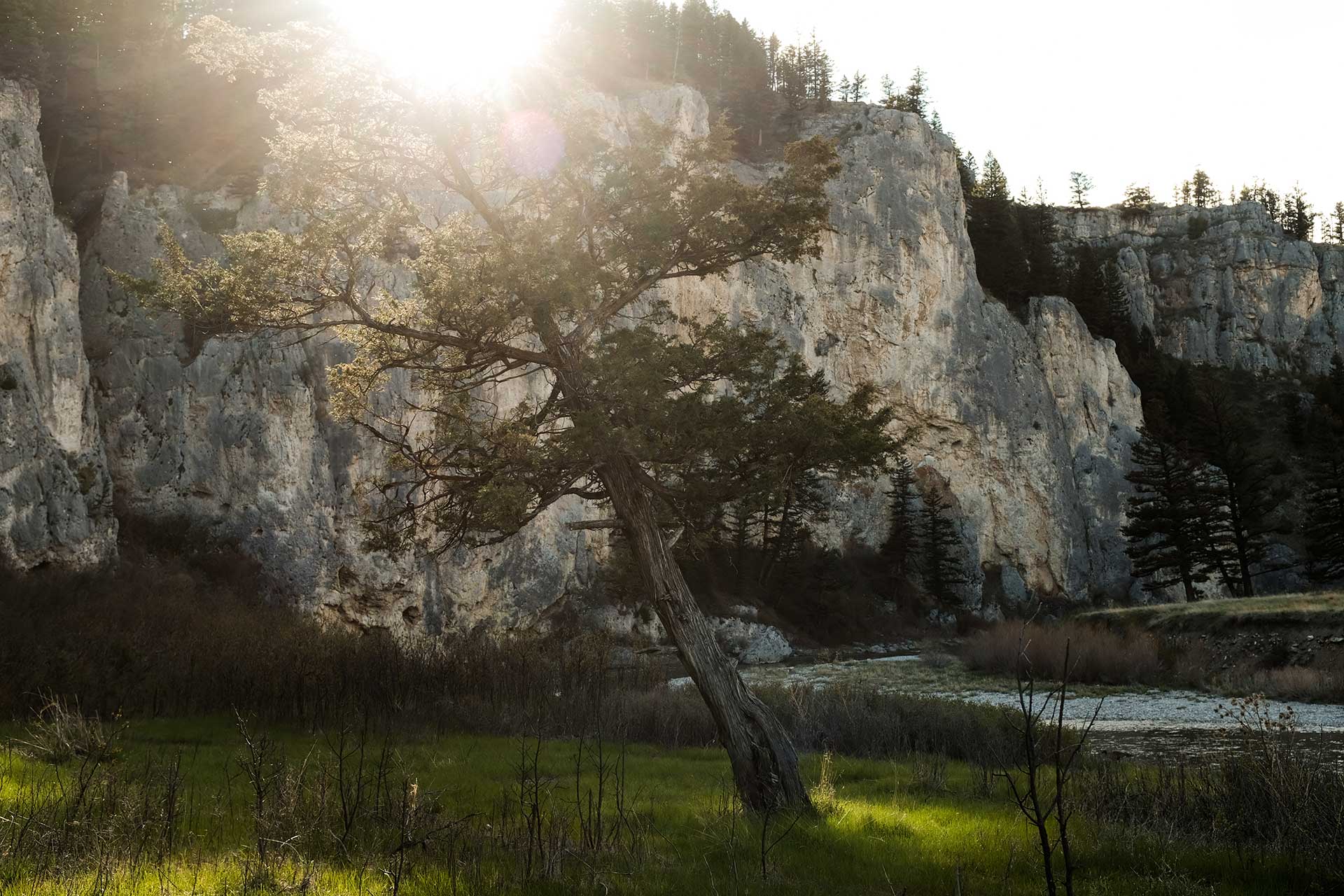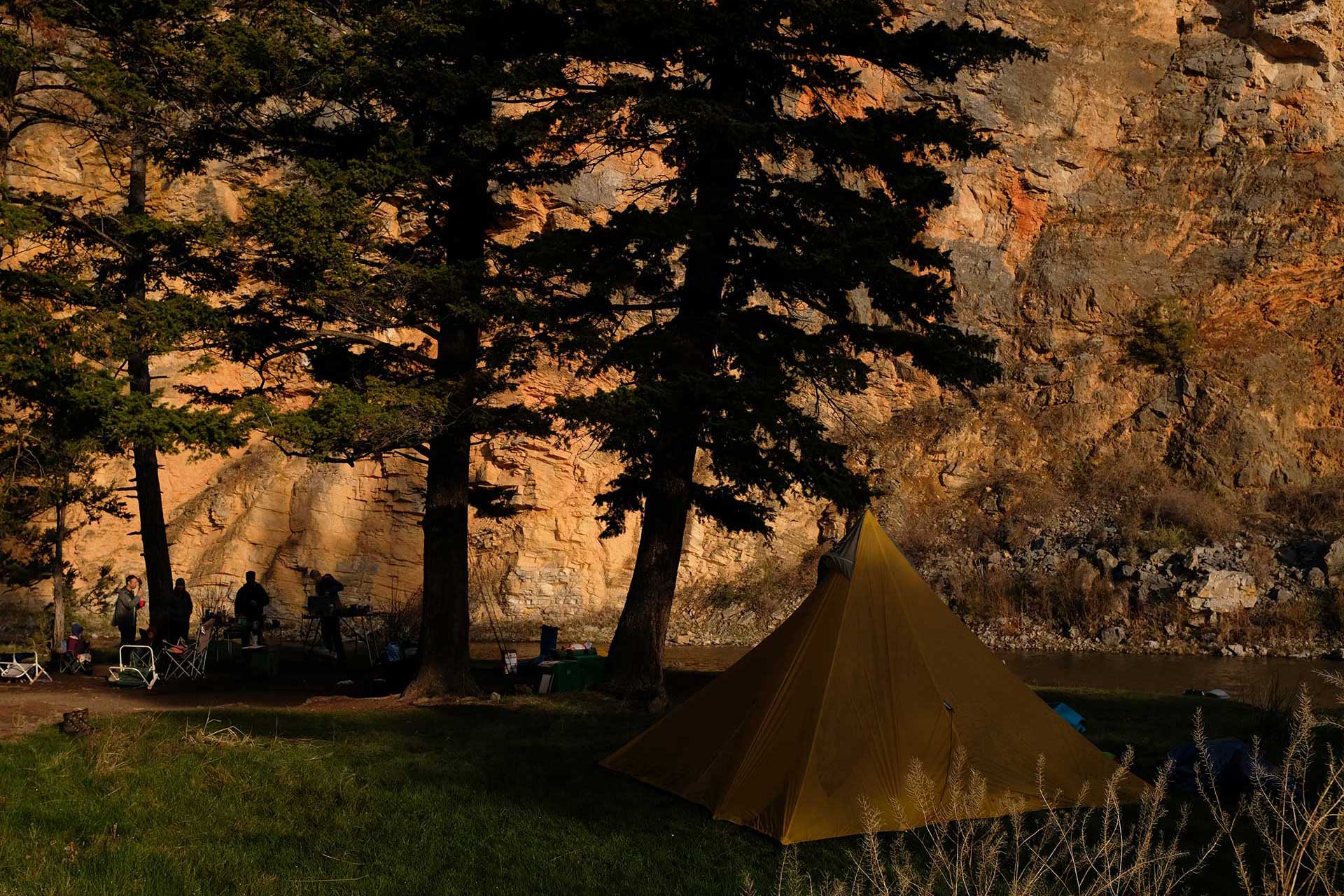Where
The Smith River flows some 120 miles in a northwesterly direction through west-central Montana, emptying into the Missouri southwest of Great Falls. Much of the river borders private lands, but a 60-mile section that flows through Smith River State Park (beginning near White Sulphur Springs) has publicly accessible campsites available to boaters lucky enough to draw a much-coveted floating permit. These lands are managed by National Forest, Montana Fish, Wildlife and Parks and Montana Department of Natural Resources and Conservation.
Smith River
Why
Amongst anglers, the Smith, a designated Blue Ribbon fishery, is renowned for its oversized brown and rainbow trout. Yet many among the 1,200 parties lucky enough to draw a river permit (more than 10,000 apply) may not even bother to string a rod.
“It’s one of the few places in Montana that’s truly remote, where it’s just your group and the water for four or five days,” described Colin Cooney, Montana field coordinator for Trout Unlimited and former river ranger on the Smith. “The scenery – especially in the canyon section – is just spectacular, with limestone walls rising 300 feet from the river in places. The floating season is short—late March to early July—and I think that finite accessibility adds to the Smith’s allure.”
Anglers can anticipate some considerable hatches on the Smith, including Skwala stoneflies, salmon flies, golden stones, Pale Morning Duns and some years, cicadas; but the fishing is not always easy.
“It seems that one moment, fish are rising everywhere,” Cooney continued, “and the next, it’s over.”
Support public lands and look good doing it!

Local knowledge
Heavy rains or temperature spikes can turn the Smith’s snow melt-fed waters into chocolate milk. But that’s no reason to cancel a trip…or to stop fishing!
“People think that when the river blows out, the fishing is ruined, but that hasn’t been my experience,” Cooney said. “The big browns like to hang under the ledges below the canyon walls, waiting for food to come by. Casting streamers against the walls can be very effective.”
TU Initiatives
Recent focus has been to rally opposition against a proposed copper mine (by foreign-owned Tintina Resources) on Sheep Creek, a major tributary that accounts for a significant percentage of the Smith’s flows and cold water, and provides key salmonid spawning habitat. “Protecting the Smith River and this fishery from mine pollution and dewatering is paramount for our members,” said David Brooks, Executive Director for Montana Trout Unlimited. The proposed mine is located on private land abutting the Lewis and Clark National Forest and Tintina holds mining claims to 10,000 acres of public land. If permitted, the mine could be expanded.
TU has been working on the Smith watershed for many years, advocating for water rights and working with local organizations to facilitate habitat restoration.
Make a Difference
The Smith River is one of Montana’s most iconic fisheries and you can help keep it that way by contacting the Governor of Montana, Steve Bullock, and the Department of Environmental Quality. Taking action today will ensure that they hear loud and clear why the Smith River is so important and why it needs to be protected.





